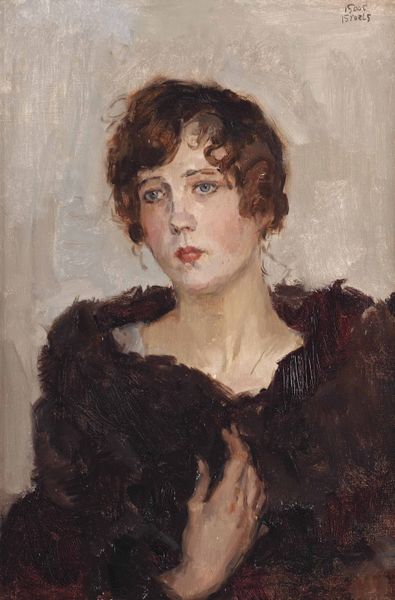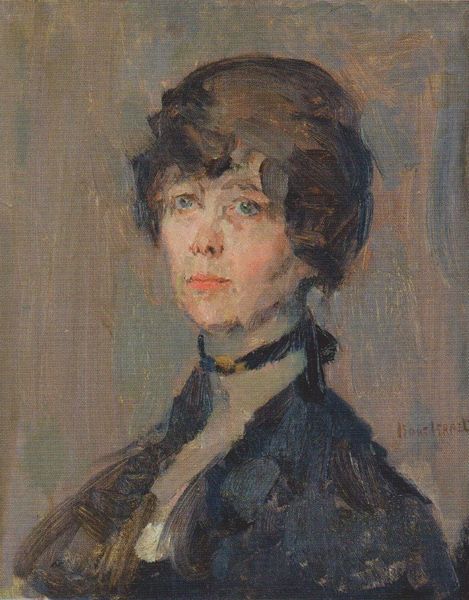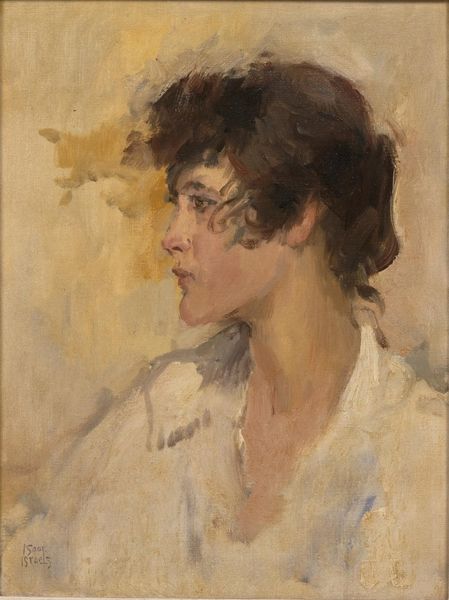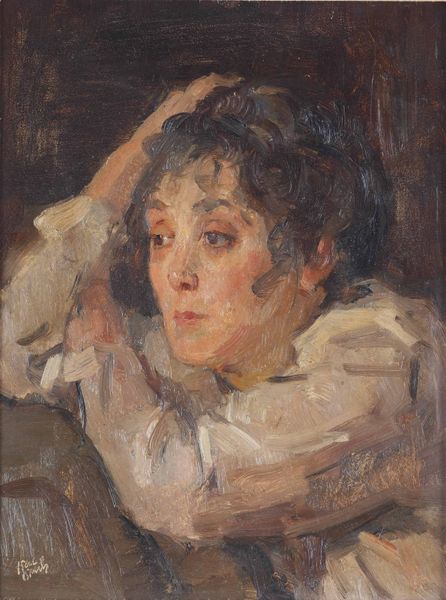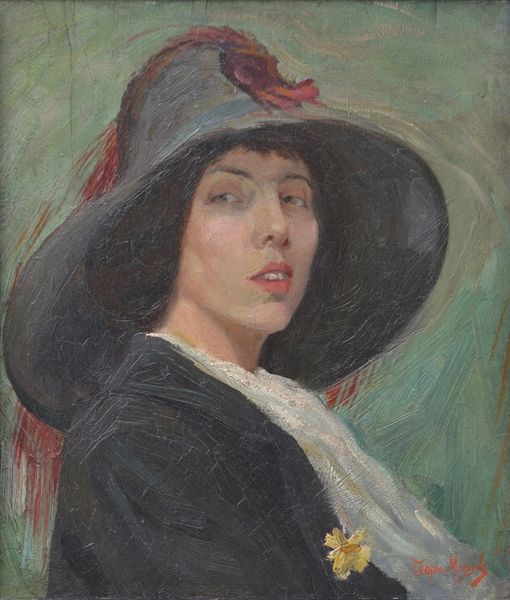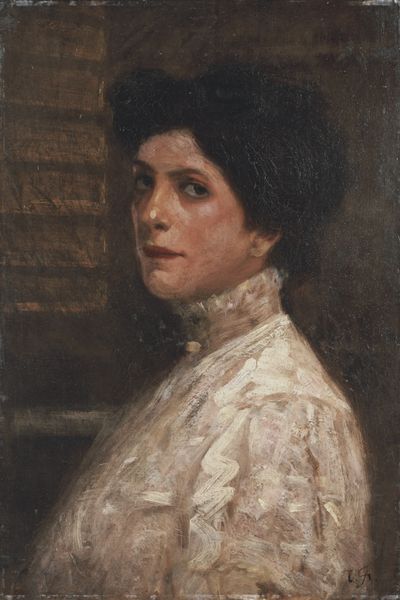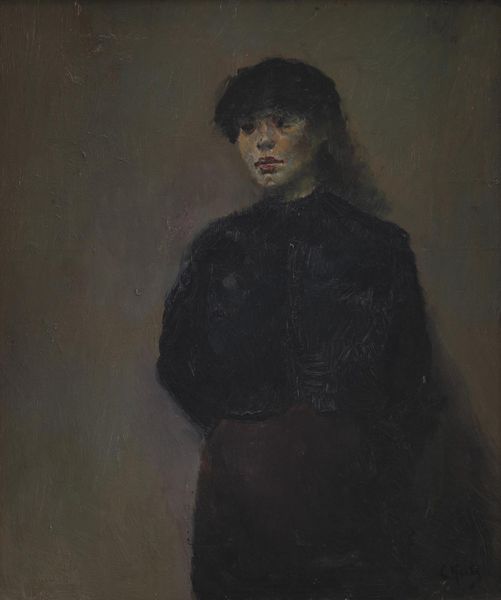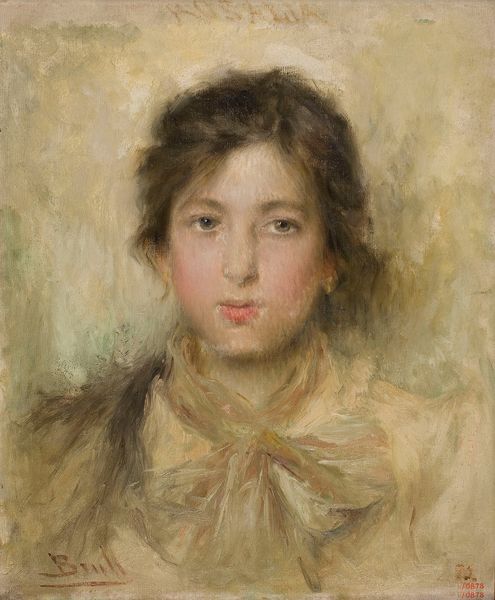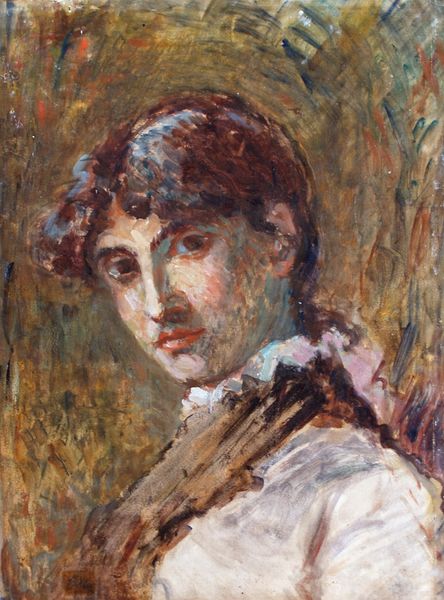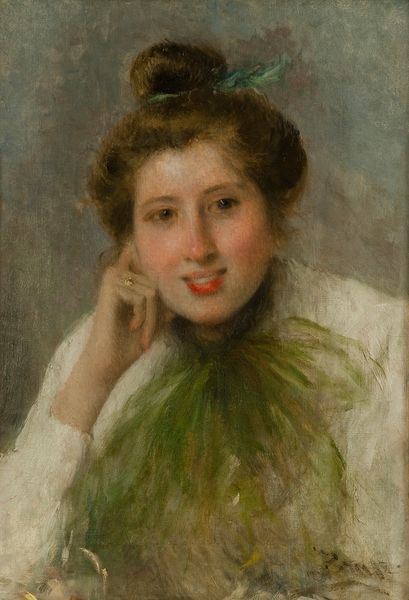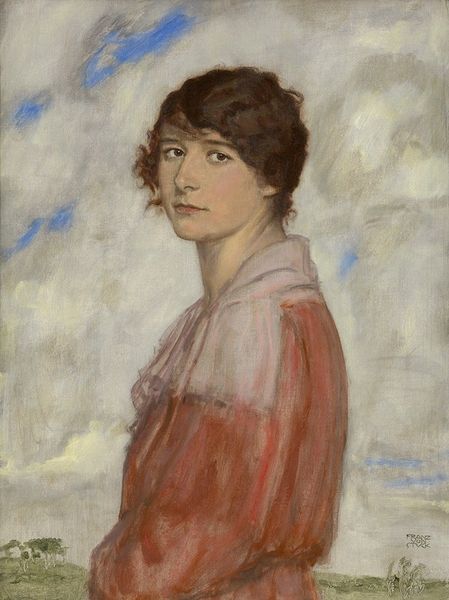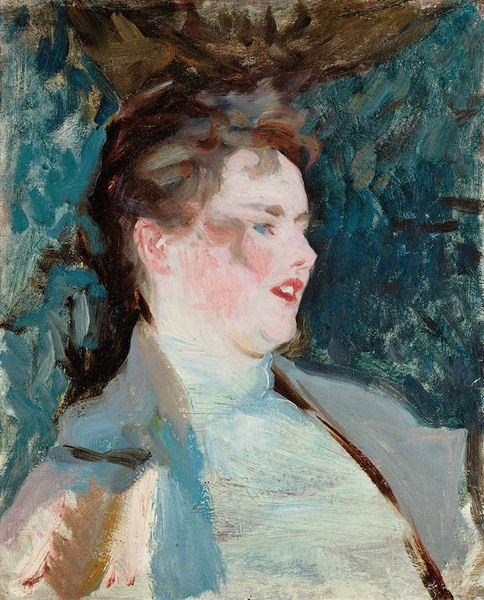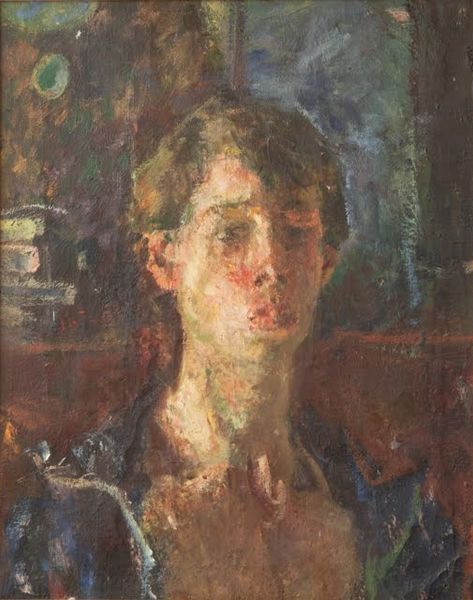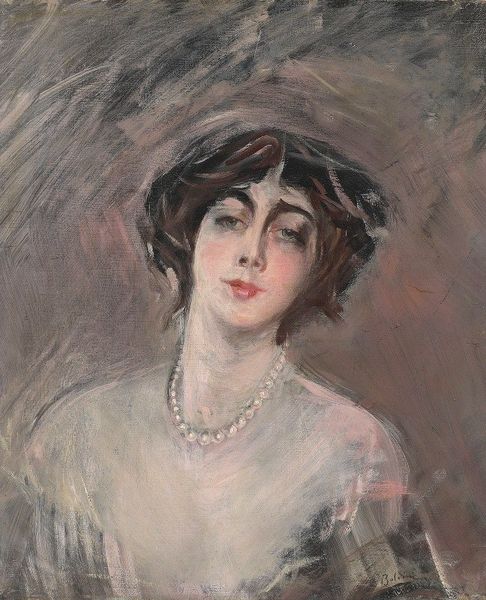
painting, oil-paint
#
portrait
#
painting
#
impressionism
#
oil-paint
#
oil painting
Copyright: Public domain
Curator: Here we have Isaac Israels' "Portrait of a Woman" at the Rijksmuseum. Editor: It's evocative! There's an almost dreamlike quality to the brushstrokes, particularly around her face. What year did Israels complete it? Curator: The artwork's date is unknown. It seems to capture a specific kind of turn-of-the-century femininity, right on the cusp of modernism, a painting rendered in oil. Israels, known for his Impressionistic style, gives us insight into his subject as a public figure. Editor: It is an excellent encapsulation of feminine symbolism. Pink roses both in her hair and at her breast are the familiar icon of innocent love and delicate beauty. She seems consciously styled to represent an ideal. But there's a slight tension. Her gaze feels very direct, almost challenging. Curator: Exactly. Israels was operating within the social constraints of portraying women during that time, particularly the relationship between class and gender in portraiture. So this painting does play with the themes of idealization versus reality. Editor: Right, those carefully chosen symbols—roses, a fashionable hat—projecting a specific identity in Dutch society. Curator: How does her expression modify those expected codes, in your view? Editor: She isn't merely a passive object; the slightly raised eyebrow and a controlled yet subtly amused glance suggests she's complicit in the construction of the public female persona while simultaneously remaining apart from it. The Impressionist style only contributes to this feeling. The quick brushstrokes seem as though this feeling came as fleeting as a glimpse. Curator: Very insightful, by looking beyond her face, we can find other visual statements in her form and attire that reveal how fashion shaped public perception. It is a piece that reflects larger conversations about women at the beginning of the 20th Century. Editor: It gives an invitation to examine layers of meaning projected, or rejected. Well observed.
Comments
No comments
Be the first to comment and join the conversation on the ultimate creative platform.
